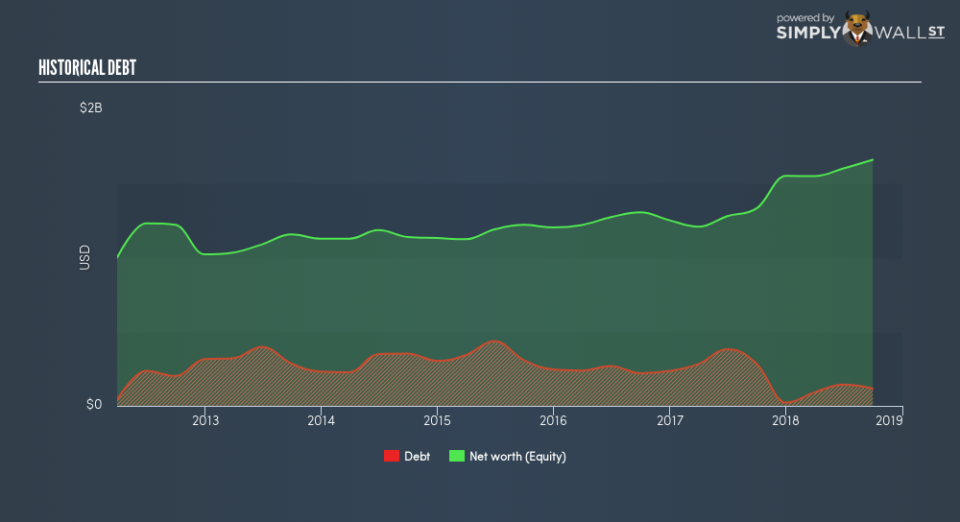Is Watsco, Inc.’s (NYSE:WSO) Liquidity Good Enough?

Want to participate in a short research study? Help shape the future of investing tools and you could win a $250 gift card!
Mid-caps stocks, like Watsco, Inc. (NYSE:WSO) with a market capitalization of US$5.0b, aren’t the focus of most investors who prefer to direct their investments towards either large-cap or small-cap stocks. Despite this, commonly overlooked mid-caps have historically produced better risk-adjusted returns than their small and large-cap counterparts. Let’s take a look at WSO’s debt concentration and assess their financial liquidity to get an idea of their ability to fund strategic acquisitions and grow through cyclical pressures. Note that this commentary is very high-level and solely focused on financial health, so I suggest you dig deeper yourself into WSO here.
Check out our latest analysis for Watsco
How much cash does WSO generate through its operations?
Over the past year, WSO has reduced its debt from US$285m to US$117m , which includes long-term debt. With this debt repayment, WSO’s cash and short-term investments stands at US$68m for investing into the business. On top of this, WSO has generated US$187m in operating cash flow in the last twelve months, resulting in an operating cash to total debt ratio of 160%, meaning that WSO’s debt is appropriately covered by operating cash. This ratio can also be a sign of operational efficiency as an alternative to return on assets. In WSO’s case, it is able to generate 1.6x cash from its debt capital.
Can WSO pay its short-term liabilities?
With current liabilities at US$509m, it appears that the company has been able to meet these commitments with a current assets level of US$1.5b, leading to a 2.95x current account ratio. Generally, for Trade Distributors companies, this is a reasonable ratio since there’s a sufficient cash cushion without leaving too much capital idle or in low-earning investments.
Does WSO face the risk of succumbing to its debt-load?
With debt at 7.0% of equity, WSO may be thought of as having low leverage. WSO is not taking on too much debt commitment, which may be constraining for future growth. We can check to see whether WSO is able to meet its debt obligations by looking at the net interest coverage ratio. A company generating earnings before interest and tax (EBIT) at least three times its net interest payments is considered financially sound. In WSO’s, case, the ratio of 98.17x suggests that interest is comfortably covered, which means that lenders may be less hesitant to lend out more funding as WSO’s high interest coverage is seen as responsible and safe practice.
Next Steps:
WSO’s high cash coverage and low debt levels indicate its ability to utilise its borrowings efficiently in order to generate ample cash flow. In addition to this, the company exhibits an ability to meet its near term obligations should an adverse event occur. Keep in mind I haven’t considered other factors such as how WSO has been performing in the past. I suggest you continue to research Watsco to get a better picture of the stock by looking at:
Future Outlook: What are well-informed industry analysts predicting for WSO’s future growth? Take a look at our free research report of analyst consensus for WSO’s outlook.
Valuation: What is WSO worth today? Is the stock undervalued, even when its growth outlook is factored into its intrinsic value? The intrinsic value infographic in our free research report helps visualize whether WSO is currently mispriced by the market.
Other High-Performing Stocks: Are there other stocks that provide better prospects with proven track records? Explore our free list of these great stocks here.
To help readers see past the short term volatility of the financial market, we aim to bring you a long-term focused research analysis purely driven by fundamental data. Note that our analysis does not factor in the latest price-sensitive company announcements.
The author is an independent contributor and at the time of publication had no position in the stocks mentioned. For errors that warrant correction please contact the editor at editorial-team@simplywallst.com.

